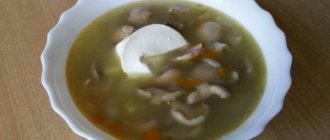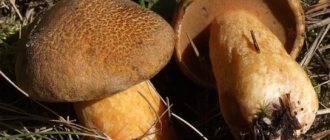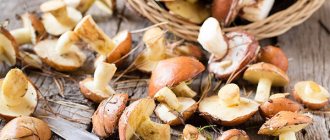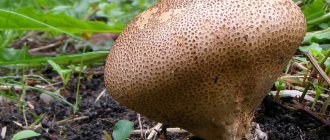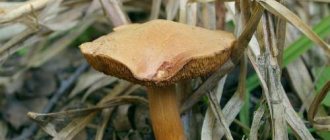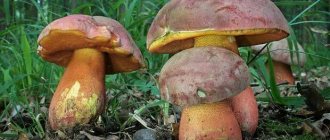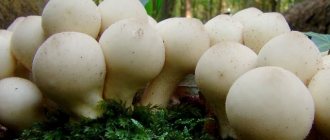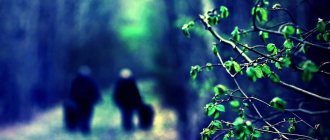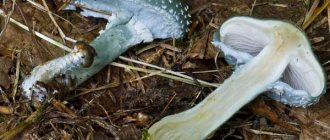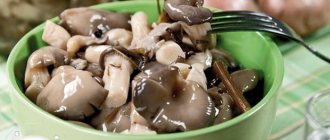Many of us know how tasty, pleasant and aromatic butterdish mushroom is. It can decorate any dish and give it a divine aroma.
One of these fragrant and tasty butterdishes is the common butterdish or, as it is also called, the real one. This mushroom appears in late autumn and, like the sun, delights mushroom pickers.
If you want to collect a whole basket of late butter mushrooms, you need to understand what this mushroom looks like. It is very important not to confuse it with others, otherwise the cooking experience will instantly spoil.
In this article we will look at what kind of mushroom the common or late butterdish is, how to distinguish it from others, what else it is famous for and where to look.
General information about the mushroom
Butterworts belong to the department Basidiomycetes, class Agaricomycetes, order Boletaceae, family Oleaceae, genus of oilers. This mushroom gets its name from its oily cap. However, a more interesting and original name for this representative of the mushroom kingdom is used in scientific circles. Scientists call it Suillus - this is from the Latin word sus, which means “pig”. This is again due to the “fat” cap of the oiler. In other countries, the mushroom also received names that emphasize the peculiarity of its cap.
Interesting Facts
Butter mushrooms, photos and descriptions of which you can find in the article below, have several interesting features. These are exactly what I would like to talk about:
- fresh boletus has a minimum calorie content - 19 kcal per 100 grams;
- in England and Germany, a large number of people consider boletus poisonous;
- the benefits of these mushrooms for the human body are enormous, for example, they are rich in vitamin D;
- boletus are found everywhere except in areas with permafrost;
- boletus are so unpretentious that they are found even in Africa;
- these mushrooms always grow in groups, so once you find an oil can, search around;
- Interested in when to collect boletus? Peak growth occurs in August;
- in Chernobyl these mushrooms were planted to artificially reduce the level of radiation;
- in the tropics there is a species of butterfish, the mucus of which is capable of dissolving some insects.
Types of butter
The most popular and widespread is the yellow-brown oiler, followed by the red oiler in terms of prevalence. But these are not the only types of boletus that grow here in Russia, and even more so in the rest of the world. We can highlight 7 of the most common and popular butter mushrooms in our country, which every mushroom picker should definitely get to know, at least in theory. It is advisable to know them before collecting, so as not to accidentally confuse them with false mushrooms.
The most popular and widespread is the yellow-brown oiler
Granular oiler (summer) – Suillus granulatus
Mycorrhizal fungus with pine trees, grows alone or in groups; widespread. The cap is 5-15 cm, arched, becomes a wide arch over time, has a smooth feel, sticky or slimy texture. Changes color from dark yellow, yellow or pale brown to dark brown or brown-orange. With age, the color fades and becomes patchwork with different shades. The veil disappears.
The surface of the pores is initially whitish, then turns yellow, often with droplets of cloudy liquid in young mushrooms. The tubes are about 1 cm deep. The pores are about 1 mm in mature specimens. Leg without a ring, white, with a bright yellow tint near the apex or the entire leg, 4-8 cm long, 1-2 cm thick, equal to or with a cone-shaped base. The top half contains tiny, brown or brownish glandular dots. The flesh is initially white, but in adult mushrooms it is pale yellow and does not stain when exposed. The smell and taste are neutral.
Larch oiler – Suillus Grevillei
The leaf butterfly fungal mycelium and tree roots exchange nutrients for the mutual benefit of both organisms. The cap is pale yellow, bright chrome yellow or bright rusty yellow, wet after rain and shiny even in dry weather. The diameter ranges from 4 to 12 cm at maturity and becomes almost flat sometimes conical or with a noticeable raised central area. The caps of large specimens are somewhat wavy at the edge.
The lemon-yellow, angular pores take on a cinnamon hue as the fruiting body matures. When bruised, the pores become rusty brown. The tubes are pale yellow and do not change color when cut. The stalk has a diameter of 1.2 to 2 cm and a length of 5 to 7 cm. A thin white veil covers the tubes of immature fruiting bodies and forms a transition ring of the stem. When the ring falls off, a pale area remains on the stem. Most of the stem is covered with brown dotted scales, but above the ring zone the stem is paler and has almost no scales.
Late (real) oiler – Suillus Luteus
Late (real) oiler – Suillus Luteus
This is a popular mushroom that is dried, ground into powder and used for mushroom broth. The wide convex cap is 5–15 cm, opens as it ripens and becomes flatter. Adhesive film from light brown to deep chocolate brown. This is a mushroom that has creamy yellow pores instead of gills.
The pores look fleecy; as the mushroom ages, the pores acquire a golden yellow color. Under the cap, a white veil covers the young pores; when the mushroom grows larger, the veil breaks and remains on the stem in the form of a ring. The leg is cylindrical, white, 4 to 8 cm high, 1 to 3 cm wide and quite smooth to the touch.
White oiler – Suillus Placidus
The mushroom is rare, so it is better to devote mass collection to other representatives of the boletus family. Specimens quickly deteriorate after collection and sometimes there is simply no time to prepare them. The mushroom cap is up to 8-10 cm in diameter. In young specimens, the cap is convex-spherical, the color is off-white, turning yellow at the edges.
In mature mushrooms, the bulge on the cap disappears as it straightens. After overripening, the cap turns yellow and bends inward. The smooth cap becomes covered with mucus after rain. When dry it shines. The thin skin peels off without effort. The white or yellow cap has soft, dense and juicy flesh. As they age they turn red.
White oiler – Suillus Placidus
The tubular layer is represented by tubes 4-7 mm deep. Young mushrooms have light yellow tubes. At a later age they become yellow-green. Overripe ones are brown-olive. The color of the angular-rounded small pores and tubes does not differ. The surface of the tubular layer secretes a red liquid. A solid leg of a curved or cylindrical shape without a ring, 5-9 cm high. When ripe, red-brown spots appear on the leg.
Yellowish oiler (swamp) – Suillus Flavidus
Marsh or yellowish butterdish is one of the most delicious representatives of the mushroom kingdom. It does not belong to the “noble” mushrooms, but experienced mushroom pickers know its value and brag when they find a mycelium. The cap of the marsh butterdish is small and not thick, in young mushrooms from 4 cm, in old ones up to 8 cm, covered with an oily film.
The developmental stages of the organism influence the shape of the cap. Hemispherical in young specimens, it flattens over time and slightly elongates closer to the stem, and a small tubercle appears at the top. The color of the cap is discreet, yellowish. In some specimens, the yellowish color is diluted with beige, grayish or pale green tones.
Yellowish oiler (swamp) – Suillus Flavidus
The rather small pores of the tubular layer of the cap are fragile, colored lemon, yellowish or ocher. The yellowish flesh of the mushroom does not emit a pronounced odor or milky juice. A strong cylindrical leg 0.3-0.5 cm thick, 6-7 cm long, slightly curved. After the cap is detached from the stem during growth, a jelly-like translucent ring of white or dirty yellow color appears on the stem. The leg is yellowish, yellow-brown below the ring. The spore shape is elliptical, the spore powder is coffee yellow.
Gray oiler – Suillus Aeruginascens
Externally, the mushroom is inconspicuous, but the taste is pleasant to food receptors and has a characteristic mushroom smell when cooked or pickled. The gray oil can is decorated with a cap in the form of a lumpy pillow, its diameter is 5-12 cm. The smooth film is damp and sticky on palpation, and is difficult to come off. A distinctive feature is brownish scales on its surface. When the veil is torn, it leaves flocculent particles that cover the tubular layer.
The skin is pale gray to brownish, olive or purple. The white and loose flesh under the cap film of old mushrooms becomes dirty white or brownish. Turns blue when exposed. The bottom of the cap consists of wide tubes that run down the stem. The shape of the tubes is irregularly angular. The color is gray with a brownish, white or yellow tint. Gray boletus reproduces by spores. They are formed in spore powder.
Gray oiler – Suillus Aeruginascens
The tall leg of the gray butterdish is shaped like a straight or curved cylinder 1-4 cm thick, 5-10 cm long. The texture of the pulp is dense, the shade is pale yellow. The veil leaves a white rim on it, which disappears as the mushroom ages. Gray butterdish is collected in young larch or pine forests. The mushroom grows in families or alone.
Cedar oiler – Suillus Plorans
The mushroom cap is up to 10 cm in circumference. In young specimens it is hemispherical, becoming arched with age. Color from dark yellow to light or dark brown, dry or viscous. The leg is cylindrical or slightly swollen at the base. Sometimes the same shade as the cap, but more often it is paler, covered with brownish protuberances.
The pulp is yellowish or yellow and does not change color when exposed to air. The tubes are dirty mustard to red in color. The pores are small, round, mustard-colored. The smell is not distinctive. The taste is neutral. Spores 9–11.5 × 4–5 µm. The cedar butterfly lives in coniferous forests, under trees in parks and gardens, and forms mycorrhizae with pine trees.
Taxonomy and naming
The slippery jack was one of many first species described in 1753 by the "father of taxonomy" Carl Linnaeus, who in the second volume of his Species Plantarum
gave it the name
Boletus yellow
.[2] The specific epithet is the Latin adjective
Luteus
, meaning "yellow".[3]
The mushroom was reclassified as (and became the type species of) the genus Suillus
by French naturalist Henri François Anne de Roussel in 1796.[4]
Suillus
is an ancient term for fungi, derived from
pig
.[5] In addition to the British Mycological Society approved name "slippery jack",[6] Other common names for this boletus include "boletus" and "sticky bun" - the latter indicating its similarity to baked goods.[7]
" Yellow boletus
", illustrated by Christian Sepp
German naturalist August Butsch described Boletus volvatus
(the specific epithet comes from the Latin
Volva
, meaning "sheath", "covering" or "uterus" [3]) next to
B. luteus
in his 1783 work
Elenchus Fungorum
.
Bache placed both of these species together with B. bovinus
and the now obsolete names
Boletus mutabilis
and
B. canus
, in a group of similar boletes he called "subordo Swilley".[8]
Boletus volvatus
is now considered a synonym of
Suillus luteus
.[1] Some authors have placed the slippery jack in other genera: Finnish mycologist.
Petter Carsten classified it as Cricunopus luteus
in 1881—the genus
Cricunopus
is defined by the yellow fused tube;[9] Lucien Quelet classified it as
Viscipellis luteus
in 1886,[10] and
Ixocomus luteus
in 1888;
and Paul Christoph Hennings placed it in the section Cricinopus
of the genus
Boletopsis
in 1900.[11]
In works published before 1987, the slippery jack was spelled entirely as Suillus luteus
(L.:Fri.) gray because Linnaeus's description was the name sanctioned in 1821 by the "father of mycology" Swedish naturalist Elias Magnus Fris.
The start date for all Miqota was set by general agreement at January 1, 1821, the date of Fries's work. Moreover, as described by Roussel Suillus
, the British botanist Samuel Frederick Gray had already been recognized as an authority on the genus in the first volume of his 1821 work.
Natural arrangement of British plants
.[12] The 1987 edition of the International Code of Botanical Nomenclature changed the rules on date of origin and main work for fungal names, and names can now be considered valid as far back as May 1, 1753, when Linnaeus's work was published.[13]
In 1986, a collection of fruiting bodies from Sweden was designated as a neotype from Suillus luteus
.[14]
In 1964, a monograph on North America Suillus
species, Alexander H. Smith and Harry Delbert Thiers classified
S. luteus
in the
Suilli
from
the Suillus
in the genus
Suillus
.
This group is characterized by the presence of either a ring on the stalk, a partial veil adjacent to the edge of the cap, or a "false veil" not attached to the stalk but initially covering the cavity of the tube.[15] Species closely related to Suillus luteus
include
S. pseudobrevipes
(a sister species),
S. brevipes
and
S. weaverae
(formerly
Fuscoboletinus weaverae
).[16]
Genetic DNA nucleotide research has strengthened the species' monophyly and low genetic divergence, with S. luteus
from Great Britain, Austria, Germany and North America forming clades, in contrast to some other species, such as
S. granulatus
, which were found to be polyphyletic.[17 ]
Chemical analysis of pigments and chromogens showed that Suillus
was more closely related to
Gomphidium
and
Rhizopogon
than to other boletes, and consequently
Suillus luteus
and its allies were transferred from Boletaceae to the newly restricted family Suillaceae in 1997.[18] Molecular studies have confirmed how distantly related these fungi are to
Porcini mushroom
and his allies.[19]
Description of the oiler
Generally speaking, you can recognize an oiler by the following characteristics:
- cap with a lot of mucus;
- the pores of the fungus are located radially or randomly;
- there is a partial veil between the stem and the cap;
- there are glandular spots (in most cases);
- lives next to coniferous trees; you can often see butterflies growing under larch trees.
It is worth noting that these characteristics are typical for all or the vast majority of oilseed species. This is confirmed by descriptions of mushrooms in reference books and photographs. Therefore, these main characteristic features are definitely worth remembering if you plan to go into the forest.
Often confused
Let's look at similar species with which the real oiler is often confused.
Cedar
A very beautiful and remarkable mushroom. It hides in pine forests, creating mycorrhiza with coniferous trees.
The color of the cap is very similar to its brother. Its flesh is yellow and turns dirty gray when exposed to air.
The mushroom has a longer stem than a real butterfly and also lives only in pine forests, next to trees.
Grey
Initially it seems that this mushroom is inconspicuous, but it also tastes very good.
The difference is that this oiler does not have a glossy cap, which means you definitely won’t confuse it with a real oiler.
Over time, the cap begins to turn gray and ceases to be brown.
Swamp oil can
Another edible mushroom, the cap of which does not exceed 5 cm in diameter. It is very miniature, has a thin and curved stem.
Larch oiler
It has a bell-shaped cap and a very stable stem. It looks a little like its brother, but thanks to its bright red hue it is not so easy to confuse them.
Useful properties of oil can
Yellow-brown oiler, red oiler or any other species of this representative of the fungal kingdom has the following beneficial properties for the human body:
- low calorie content of butter – 19 kcal per 100 grams;
- a large amount of folic acid;
- more than 1.3 mg of iron per 100 grams of mushroom - this is a lot and it is very useful;
- contains 12 mg of ascorbic acid per 100 grams of oil - it boosts immunity;
- boletus contains vitamin B and especially a lot of vitamin D;
- It also contains sodium, calcium, zinc, manganese, fluorine and other beneficial substances.
Processing mushrooms after harvesting
Before further preparation, the butter must be sorted and cleaned. During the process, you need to look out for wormy and false mushrooms; you should get rid of them immediately - dispose of them. Edible boletus must be cleaned of debris, dirt and leaves, and the top skin on the cap must be removed. To make this easier, you can first dip the mushrooms in boiling, lightly salted water for a couple of minutes, and then transfer them to cold water and place on a sieve. After this, the slimy skin will be easy to remove. At this point, the processing of the mushrooms after collection is completed; the mushrooms can be used in further preparation.
Processing mushrooms after harvesting
Edible boletus must be cleaned of debris, dirt and leaves, and the top skin on the cap must be removed.
Characteristics are oily
It is very important to know what boletus looks like in general terms. It is not even necessary to understand the varieties of this mushroom; it is enough to be able to distinguish it from false analogues. For example, butter mushrooms with a skirt are very likely to turn out to be false mushrooms, and it is better not to touch them. In order not to collect poisonous representatives of the mushroom kingdom in your basket, you need to know what boletus looks like. We'll talk about this in detail below.
hat
Butterflies are small and medium-sized mushrooms, some varieties are similar to moss mushrooms. The cap of young mushrooms has a hemispherical, sometimes conical shape. As it grows, it straightens and, as a rule, takes on a shape similar to a pillow. The largest diameter of the cap is 15 cm.
A feature of butter mushrooms that distinguishes them from other mushrooms is the thin film-like skin covering the cap: sticky and shiny. It can be slimy, constantly or only during wet weather, and in some species it is slightly velvety, subsequently cracking into small scales.
The skin is usually easy to separate from the pulp. Its color varies from yellow, ocher tones to brown-chocolate and brown, sometimes with spots and color transitions. The color of the cap depends not only on the type of oiler, but also on the lighting and the type of forest in which it grows.
A special feature of the butter is the thin film-like skin covering the cap: sticky and shiny.
Pulp
The flesh of the butter is dense, but soft. Its color is whitish or yellowish; when cut, some species of oilseed may change: turn red or blue. The pulp does not smell at all or has a pleasant pine smell. Butterflies age very quickly. After 7-9 days, the flesh becomes flabby and dark. In addition, these fungi are often attacked by worms. Not only old, but also very young mushrooms that have just emerged from the ground are attacked by worms, of which one in fifteen is not wormy.
Leg
The leg of the butterfish is cylindrical in shape. Its average dimensions are: diameter from 1 to 3.5 cm and height from 4 to 10 cm. The color is whitish with a dark bottom or matches the color of the cap. It happens that a whitish liquid is released from the pores and solidifies in droplets on the stem, while its surface becomes granular.
Description and photo Oil can of the present
When going to the forest, do not forget to read the material about what the autumn butterdish looks like.
By the way, this mushroom of the Boletaceae family has a lot of nicknames. It is called yellow, true, autumn, ordinary and late. All these names were not given to it by chance, but completely reflect the specifics of the growth, appearance and development of the fungus. The most delicious among butter dishes.
Like other boletus brethren, this mushroom is distinguished by a slippery and sticky surface of the cap, which has a glossy sheen. From a distance it looks like it's been smeared with oil.
However, this business card will help you find those same butteries.
From Latin - Suillus luteus.
hat
The hat of the real oiler is very noticeable. The mushroom is not located high above the soil, but you will definitely see bright brown dots against a dark background of earth or withered grass.
It is hemispherical, in youth it looks more like a cone shape, however, the closer to the end of the season, the more spread out the cap becomes. It is fleshy and elastic, if you try to push it with your fingers, it quickly recovers.
The maximum diameter of the cap can reach 15 cm, but such large mushrooms are rare. Most often, the diameter varies from 5 to 8 cm.
The color varies depending on the composition of the soil and the location of the fungus. If the mushroom lives in a pine forest, then its cap is browner, but if in open meadows where the last rays of the sun fall, then the cap is lighter and less glossy.
If you look at the mushroom, its main feature is a film that shimmers in the sun. It is glossy and sticky, as if poured with syrup. This effect creates the impression of spilled oil. Small insects and forest debris get stuck in this glue, so the skin of the cap must be removed before use.
Records
The plates of the tubular oiler are barely visible and small. In young mushrooms they have a light beige or yellow tint. However, older individuals have a brown color, dark and rich.
The spores of the fungus are small, round, and the spore powder is stored in it very reliably. Speaking of spore powder. It is located under the cap and is brown in color. It falls out when a small ring-shaped growth appears right at the very base of the leg.
Leg
When you look at an oiler and wonder how such a large, weighty cap can be supported by such a thin, curved leg. Indeed, the leg of real butterfish is not at all thick. In diameter it rarely exceeds two and a half centimeters.
It grows quite high in height, up to 10 cm, but such mushrooms are rare.
The leg is also colored depending on the location of the soil composition. It can be light if it grows in clearings to match the color of the cap, or dark if it grows in pine forests.
Sometimes juice begins to ooze out at the very base of the mushroom; it does not have time to flow down the stem and solidifies into small grains or grains right at the base. Due to this, a so-called roughness is formed, which gives the leg stability
Pulp
Special attention should be paid to the pulp of the mushroom, because it is precisely because of it that the butter dish is so loved and revered.
It may be white if you picked a very young mushroom, or it may have a creamy beige tint.
If you cut a mushroom and divide the flesh in half, you will see that the color changes due to interactions with oxygen. Depending on the time when you picked the oil can, the flesh may turn blue or red.
If the autumn butterdish grows in a pine forest, it will smell like pine needles. If it grows in clearings, in deciduous forests, then it has a pronounced mushroom smell.
The pulp is very dense, not loose and elastic. However, if you collect old mushrooms, make sure that the flesh is no longer rotten.
Worms love this mushroom, so there may be a majority of spoiled butternuts in your basket. However, when by autumn, with the onset of cold times, insects die off, the number of pure mushrooms without damage by insects increases greatly
Edibility
In Russia, Belarus, CIS countries, as well as in the western regions, this mushroom belongs to the edible order. It belongs to the second category, which means it can be consumed either fresh, albeit after preliminary cleaning, or pickled. Naturally, only after careful heat treatment.
In order to completely protect yourself, it is enough to boil it for up to 15 minutes. The real butterdish is considered the most delicious of the family, and the most aromatic. This mushroom is often used in preparing various delicacies.
True, in order to completely protect yourself, the oiler needs to be properly prepared.
- To do this, it is well cleaned of debris, and wormy mushrooms that will no longer be needed are removed.
- The next step is to wash the boletus in cold water, preferably through a colander.
- Blot well with a towel.
- Use a sharp knife to pry off the skin of the cap. It needs to be removed.
Only after this the oiler will be ready for further use.
It is best to clean mushrooms just before you intend to use them in cooking. Otherwise, if they sit for a couple of hours, they will definitely turn black and will no longer look so attractive.
Article on the topic - Marsh or yellowish oiler (lat. Suillus flavidus): one of the rare ones.
What do boletus look like?
Now you know what boletus looks like. If you are going on a mushroom hunting trip for the first time, take photographs of mushrooms with you. There may not be Internet in the forest, so it is advisable to download everything in advance. In addition, beginners are recommended to take an experienced mushroom picker with them on their hike. He will not only supervise the collection process, but will also tell people the medicinal properties of mushrooms, how quickly butter mushrooms grow after rain, in which forests and when they appear, and much more. Therefore, an experienced mushroom picker in the company will definitely not hurt.
What do boletus look like?
Recommendations
- ^ a b
"Synonymy of GSD species:
Suillus luteus
(L.) Roussel." Fungorum species. CAB International. Retrieved July 28, 2014. - Linnaeus K. (1753). Plantarum spp.
(in Latin).
2
. Stockholm, Sweden: Laurentii Salvii. item 1177. - ^ a b
Simpson D.P.
(1979). Cassell's Latin Dictionary
(5th ed.). London: Cassell. pp. 354, 649. ISBN 978-0-304-52257-6. - Roussel HFA. (1796). Flore du Calvados et terrains contiguous, composée suivant la méthode de Jussieu
(In French). Caen, France: L.-J. Poisson. paragraph 34. - ^ a b c d
Arora D. (1986) [1979].
Mushrooms Demystified: The Complete Guide to Fleshy Mushrooms
. Berkeley, CA: Ten Speed Press. item 500. ISBN 978-0-89815-169-5. - "English names of mushrooms 2014". British Mycological Society. June 2014. Retrieved July 27, 2015.
- Jordan P. (2015). A Field Guide to Edible Mushrooms of Great Britain and Europe
. London: Bloomsbury Publishing. paragraph 102. ISBN 978-1-4729-2085-0. - Batsch A.J.G.K. (1783). Elenchus Fungorum
(in Latin and German). Magdeburg, Germany: Apud Joannem Jacobum Gebauer. paragraph 99. - Karsten PA. (1881). "Enumeratio Boletinearum et Polyporearum Fennicarum." Revue Mycologique Toulouse
.
3
(9): 16. - Kelet L. (1886). Enchiridion fungorum in Europa media et praesertim in Gallia vigentium
. Switzerland: O. Duan. paragraph 155. - Hennings PC (1900). "Mushrooms (Eumycetes)". Die natürlichen Pflanzenfamilien nebst ihren Gattungen und wichtigeren Arten insbesondere den Nutzpflanzen
.
1 (in German). 1
. Leipzig, Germany: W. Engelmann. paragraph 195. - Gray SF. (1821). Natural arrangement of British plants
.
1
. London: Baldwin, Cradock and Joy. item 646. - Hawksworth DL. (2001). "Naming mushrooms." In McLaughlin DJ, McLaughlin EG (eds.). Systematics and evolution.
Part B.
Mycota: a comprehensive treatise on fungi as experimental systems for basic and applied research. 7
. Berlin: Springer. pp. 171–92 (see p. 181). ISBN 978-3-540-66493-2. - Palm M. E., Stewart E. L. (1986). "Typification and nomenclature of selected Suillus
varieties".
Mycology
.
78
(3): 325–33. Doi:10.2307/3793035. JSTOR 3793035. - ^ a b c d f f
Smith A. H., Thiers H. D. (1964).
Contribution to a monograph of North American
Suillus
species
(PDF). Ann Arbor, MI: Privately published. pp. 67–68. - Kretzer A., Li Y, Saro T., Bruns T.D. (1996). "Internal transcribed spacer sequences of 38 recognized species of Suillus
sensu lato: Phylogenetic and taxonomic implications."
Mycology
.
88
(5): 776–85. Doi:10.2307/3760972. JSTOR 3760972. - Manian S, Sreenivasaprasad S, Bending GD, Mills PR (2001). "Genetic diversity and relationships among pan-European Suillus
species based on ribosomal DNA sequences."
FEMS Microbiology Letters
.
204
(1):117–21. Doi:10.1111/j.1574-6968.2001.tb10873.x. PMID 11682189. - Besl H, Bresinsky A (1997). "Chemosystematics of Suillaceae and Gomphidiaceae (suborder Suillineae)". Systematics and evolution of plants
.
206
(1–4): 223–42. Doi:10.1007/BF00987949. S2CID 2359393. - Binder M, Hibbett DS. (2006). "Molecular systematics and biological diversity of boletus." Mycology
.
98
(6):971–81. Doi:10.3852/mycologia.98.6.971. PMID 17486973. - ^ a b c d
Zeitlmayr, L. (1976).
Wild Mushrooms: An Illustrated Guide
. Hertfordshire, UK: Garden City Press. paragraph 101. ISBN 978-0-584-10324-3. - ^ a b c d f g gram h i
Haas , H. (1969).
A young professional looks at mushrooms
. London: Burke. paragraph 46. ISBN 978-0-222-79409-3. - ^ a b
Phillips R. (2006).
Mushrooms
. London: Pan Macmillan. p. 292. ISBN 978-0-330-44237-4. - ^ a b
Ammirati JF, McKenney M, Stuntz DE (1987).
New spicy wild mushroom
. Seattle: University of Washington Press. paragraph 20. ISBN 978-0-295-96480-5. - ^ a b
Min Y.J., Park M.S., Fong J.J., Sok S.J., Han S.K., Lim Y.W.
(2014). “Molecular taxonomic reclassification of the genus. Suillus
Micheli ex S. F. Gray in South Korea."
Mycobiology
.
42
(3): 221–28. doi:10.5941/MYCO.2014.42.3.221. PMC 4206787. PMID 25346598. - ^ a b c d
Kuo, M. (2007).
100 edible mushrooms
. Ann Arbor: University of Michigan Press. pp.221–23. ISBN 978-0-472-03126-9. - ^ a b
Nilsson S., Persson O. (1977).
Mushrooms of Northern Europe 1: larger mushrooms (except gill mushrooms)
. Penguin Nature Guides. New York: Penguin Books. paragraph 110. ISBN 978-0-14-063005-3. - Sarwar S., Khalid A.N. (2013). "Preliminary Checklist of Porcini Mushrooms in Pakistan" (PDF). Mycotaxon
: 1–12. - Vellinga EK, Wolfe BE, Pringle A (2009). "Global patterns of ectomycorrhizal introductions." New Phytologist
.
181
(4):960–73. Doi:10.1111/j.1469-8137.2008.02728.x. PMID 19170899. S2CID 17538402. - Both E. E. (1993). Diseases of North America.
Compendium . Buffalo, NY: Buffalo Science Museum. pp. 190–91. ISBN 978-0-944032-54-1. - Peck CH. (1887). "New York Species of Viscous Boletia". Bulletin of the New York State Museum
.
1
(2): 57–66. - Roberts P., Evans S. (2011). Book of Mushrooms
. Chicago, IL: University of Chicago Press. p. 356. ISBN 978-0-226-72117-0. - Dunstan, W. A., Dell, B., Malaichuk, N. (1998). "Diversity of ectomycorrhizal fungi associated with introduced Pinus
species in the Southern Hemisphere, especially Western Australia."
Mycorrhiza
.
8
(2): 71–79. Doi:10.1007/s005720050215. S2CID 32374410. - Leonard P. (2012). “The key to mushrooms is Suillus
.”
QMS Website
. Queensland Mycological Society. Retrieved August 4, 2015. - Ratkovsky D.A., Gates G.M. (2005). "Inventory of macrofungi observed in Tasmanian forests over a six-year period" (PDF). Tasforests
.
16
: 153–68. Archived from the original (PDF) on December 29, 2013. - Hedger, J. (1986). " Suillus luteus
at the equator".
Bulletin of the British Mycological Society
.
20
(1):53–54. Doi:10.1016/S0007-1528 (86) 80015-3. - Farley K.A., Kelly E.F. (2004). "Effects of Paramelobite Afforestation on Soil Nutrient Status" (PDF). Ecology and forest management
.
195
(3):281–90. doi:10.1016/j.foreco.2003.12.015. Archived from the original (PDF) on September 23, 2015. Retrieved August 4, 2015. - Sulzbacher M.A., Grebenk T., Jacques R.J., Antoniolli Z.I. (2013). "Ectomycorrhizal fungi from southern Brazil—a review of the literature, their origins and potential hosts." Mycosphere
.
4
(1): 61–95. Doi:10.5943/mycosphere/4/1/5. - Barroetaveña C, Rajchenberg M, Cázares E (2005). "Mycorrhizal fungi in Pinus ponderosa
introduced to Central Patagonia (Argentina)."
Nova Hedwigia
.
80
(3–4): 453–64. Doi:10.1127/0029-5035/2005/0080-0453. - Watling, R. (2012). "Ectomycorrhizal fungi and the non-agaricoid basidiomycete macromycetes of the Falkland Islands". Edinburgh Botanical Journal
.
69
(2): 219–38. Doi:10.1017/S0960428612000042. - Van der Westhuizen GCA, Eijker A (1994). A Field Guide to the Fungi of South Africa
. Cape Town: STRUIK. paragraph 97. ISBN 978-1-86825-507-8. - Muller LAH, Lambaerts M, Vangronsveld J, Colpaert JV (2004). "AFLP-based assessment of the impact of environmental heavy metal pollution on the genetic structure of early populations of Suillus luteus
."
New Phytologist
.
164
(2):297–303. Doi:10.1111/j.1469-8137.2004.01190.x. HDL:1942/2299. - Loizides M., Kyriacou T., Tsiakouris A. (2011). Edible and toxic mushrooms of Cyprus
(in Greek and English). self-published pp. 266–67. ISBN 978-9963-7380-0-7. - Karadelev M, Rusevskaya K, Spasikova S (2007). "The Family Boletaceae sl (Except Boletaceae
) in the Republic of Macedonia" (PDF).
Turkish Journal of Botany
.
31
(6):539–50. - Yagiz D., Afyon A., Konuk M., Helfer S. (2006). "Contribution to macrofungi of Kastamonu Province, Türkiye". Mycotaxon
.
98
: 177–80. - Kuo M. (November 2004). " Suillus luteus
: Slippery Jack". MushroomExpert.Com. Retrieved May 15, 2010. - Torres P., Gonrubia M. (1994). "Ectomycorrhizal associations proven for Pinus halepensis
."
Israeli Journal of Plant Sciences
.
42
(1):51–58. Doi:10.1080/07929978.1994.10676557. - Hayward J, Horton TR, Pauchard A, Nunez MA. (2015). "One species of ectomycorrhizal fungus may mediate Pinus
invasion" (PDF).
Ecology
.
96
(5):1438–44. Doi:10.1890/14-1100.1. HDL:10533/228566. PMID 26236856. - Churchland S, Grayston SJ (2014). "Specificity of plant-microbe interactions in the tree mycorrhizosphere biome and implications for soil carbon cycling." Frontiers in Microbiology
.
5
: 261. doi:10.3389/fmicb.2014.00261. PMC 4042908. PMID 24917855. - Haselwandter K, Häninger G, Ganzera M (2011). “Hydroxamate siderophores of ectomycorrhizal fungi. Suillus granulatus
and
S. luteus
."
BioMetals
.
24
(1): 153–57. Doi:10.1007/s10534-010-9383-4. PMID 20981471. S2CID 22766614. - Chapela IH, Osher LJ, Horton TR, Henn MR. (2001). “Ectomycorrhizal fungi introduced by exotic plantations cause soil carbon depletion” (PDF). Biology and biochemistry of soil
.
33
(12–13): 1733–40. Doi:10.1016/S0038-0717(01)00098-0. - Vosátka M, Rydlová J, Sudová R, Vohník M (2006). "Mycorrhizal fungi as auxiliary agents in phytoremediation of degraded and contaminated soils." In Mackova M, Dowling DN, Macek M (eds). Phytoremediation and rhizoremediation
. Dordrecht, Germany: Springer Science & Business Media. paragraph 245. ISBN 978-1-4020-4999-6. - Krznaric E, Verbruggen N, Wevers JH, Carleer R, Vangronsveld J, Colpaert JV (2009). "CD-tolerant Suillus luteus
: insurance against fungus in CD-exposed pine trees."
Environmental pollution
.
157
(5):1581–88. doi:10.1016/j.envpol.2008.12.030. PMID 19211178. - Müller LA, Vangronsveld J, Kolpaert SP (2007). "Genetic structure Suillus luteus
populations in habitats contaminated and unpolluted with heavy metals."
Molecular Ecology
.
16
(22): 4728–37. Doi:10.1111/j.1365-294X.2007.03549.x. PMID 17927704. S2CID 6468284. - " Suillus luteus
".
MycoCosm
. Joint Genome Institute. US Department of Energy. Retrieved August 3, 2015. - Kohler, A., Kuo, A., Nagy, L. G., Morin, E., Barry, K. W., Buscot, F., et al. (2015). "Convergent losses of decay mechanisms and rapid turnover of symbiosis genes in mycorrhizal mutualists". Nature Genetics
.
47
(4): 410–15. doi:10.1038/ng.3223. PMID 25706625. - Hackmann W, Meinander M (1979). "Diptera feeding on macrofungi as larvae in Finland" (PDF). Annales Zoologici Fennici
.
16
(1):50–83. JSTOR 23733712. - Sitta N., Suess L. (2013). "Insects parasitizing edible ectomycorrhizal fungi." In Zambonelli A, Bonito GM (eds.). Edible ectomycorrhizal fungi: current knowledge and future prospects
. Springer Science & Business Media. pp. 342–43. ISBN 978-3-642-33823-6. - Böllmann J, Elmer M, Welleke J, Reidl S, Hüttl RF (2010). "Defensive strategies of soil fungi to prevent grazing by Folsomia candida
(Collembola)."
Pedobiology
.
53
(2): 107–14. Doi:10.1016/j.pedobi.2009.06.003. - Phillips, Roger (2010). Mushrooms and other fungi of North America
. Buffalo, NY: Firefly Books. p. 288. ISBN 978-1-55407-651-2. - Jordan M. (1995). Encyclopedia of Fungi of Great Britain and Europe
. London: David and Charles. item 350. ISBN 978-0-7153-0129-6. - Lamaison JL, Polese JM (2005). Great encyclopedia of mushrooms
. Cologne, Germany: Könemann. pp. 20–21. ISBN 978-3-8331-1239-3. - ^ a b
Sitta N., Floriani M. (2008).
"Trends in nationalization and globalization of the wild mushroom trade in Italy, with emphasis on porcini mushrooms ( Cep
and related species)."
Applied Botany
.
62
(3): 307–22. Doi:10.1007/s12231-008-9037-4. S2CID 44274570. - Dahlberg, A., & Finley, R. D. (1999). " Suillus
".
In Cairney DJWG, Chambers DSM. (ed.). Ectomycorrhizal fungi: key genera in profile
. Berlin: Springer. pp. 33–64 (see p. 40). ISBN 978-3-662-06827-4. - De Roman M. (2010). "The contribution of wild mushrooms to diet, income and health: a global overview." Progress in Mycology
. Springer Netherlands. pp. 327–48 (see p. 336). Doi:10.1007/978-90-481-3713-8_12. ISBN 978-90-481-3712-1. - Bike, B., Nzigidahera, B. (1995). "Ethnomycological notes from western Burundi". Belgian Journal of Botany
.
128
(2):131–38. JSTOR 20794358. - Blanco D., Fajardo J., Verde A., Rodriguez, C. A. (2012). “Etnomicología del género Suillus
, una visión global” (PDF).
Boletín de la Sociedad Micológica de Madrid
(in Spanish).
36
: 175–86. - "Mushroom picking" Information for visitors
. Oberon Australia. 2015. Retrieved August 14, 2015. - Kwiatkowski, M. (2004). "Recreating the Polish Domestic Landscape.'" (PDF). In Drozd E, Cahill D (eds.). Polonia in Australia: Challenges and Opportunities in the New Millennium
. Footscray, Victoria: Australian Polish Community Services. pp. 23–25. ISBN 978-0-9577974-6-8. - Carluccio A. (2003). The Complete Book of Mushrooms
. London: Quadrille. paragraph 74. ISBN 978-1-84400-040-1. - Brun J, Soderberg M (1991). "Allergic contact dermatitis caused by fungi." Mycopathology
.
115
(3):191–95. Doi:10.1007/BF00462225. PMID 1749402. S2CID 36511162. - McKnight, K., McKnight, W., & Peterson, R. (1998). A Field Guide to Fungi: North America
. New York: Houghton Mifflin Harcourt. item 500. ISBN 978-0-395-91090-0. - Murat S., Mello A., Abba S., Vizzini A., Bonfante P. (2008). "Edible mycorrhizal fungi: identification, life cycle and morphogenesis". In Varma A. (ed.). Mycorrhiza.
Current status, genetics and molecular biology, eco-function, biotechnology, eco-physiology, structure and systematics . Berlin: Springer. pp. 707–32. ISBN 978-3-540-78824-9. - Sforza, S. (2013). Food Authentication Using Bio-Organic Molecules
. Lancaster, PA: DEStech Publications. paragraph 173. ISBN 978-1-60595-045-7. - Moore, D. B., Brodmann, P., Nicholas, P. G., Eugster, A. (2002). "Polymerase chain reaction (PCR) for the detection of boletus ( Cep
) and slippery jack (
Suillus luteus
) in food samples."
European Food Research and Technology
.
214
(4):340–45. Doi:10.1007/s00217-001-0458-x. S2CID 6211829.
Where do boletus grow?
The yellow-brown oiler, and any other type of this mushroom, is mainly distributed in the Northern Hemisphere of our globe. But I repeat once again: they are found everywhere, except in places with permafrost. Usually boletus grows in coniferous forests. Depending on the species, the fungus can be found under pine, larch, fir and other trees. Sometimes they can be found near birch and oak trees, but more often they are found near coniferous trees. At the same time, boletus does not like dark forests, so there is a better chance of finding mushrooms at the edge of the forest, clearing or outskirts.
Where and at what time does it grow?
Where to look for a real oiler? After all, many people want to enjoy these tasty and healthy mushrooms. It is believed that this mushroom loves temperatures from +15 to +18°, that is, it practically does not survive in the summer.
Also, it loves rainy weather, so it appears on the second or even third day after a good rainfall. It lives in mountainous areas, where these boletus grow en masse along stones, on rocks.
It stops actively bearing fruit and developing when the temperature becomes sub-zero. And after -5 it stops altogether.
In summer, boletus does not grow as actively, and most of them are wormy. The fact is that this mushroom is a real delicacy for insects, which means that a person simply will not have time to cut off a mushroom untouched by worms.
Distribution area is mainly in the northern hemisphere. In Russia there are in the European part, in the Caucasus, Siberia, the East and the Urals. It is also available in European and CIS countries. Likes a climate that is not too hot, but moderately cold. Sometimes found in tropical regions, however, the mushrooms usually do not take root there.
It is recommended to go out on a quiet hunt between mid-September and mid-October. It is at this time that it grows actively. The first boletus appears at the end of June.
When boletus grows
The yellow-brown butterdish, like any other mushroom, grows most actively in August-September. However, boletus can already be found at the beginning of summer, albeit in small quantities. These mushrooms grow most actively at temperatures from 15 degrees Celsius. And if there has been heavy rain recently, it can grow by several centimeters in just a couple of days. How long do boletus grow after rain? Usually 3-5 days to adulthood. But how long does boletus take to grow under normal conditions? Usually 7-9 days, it depends on external factors and the type of fungus.
Edibility butter
Butterflies are edible mushrooms that can be prepared in different ways: fried, boiled, frozen, pickled, dried, stewed, and so on. However, not all boletus is edible. So, you need to immediately throw away the wormy fruits. There is also a high chance of getting boletus poisoning if these mushrooms were collected near a city, factory or road. Since toxic substances are released into the atmosphere, which boletus and any other mushrooms absorb. Therefore, you need to collect only in the forest away from populated areas.
Edibility butter
Ecology
Featured on a 1964 Soviet Union postage stamp.
Suillus luteus
It is a pioneer species that usually becomes established in the early stages of forest succession.[41]
The fungus forms mycorrhizal associations with various species of pine, including Scots pine ( P. sylvestris
), black pine (
P. nigra
),[42] and Macedonian pine (
P. peuce
) in Europe,[43][44] and red pine (
P. resinosa
) and white pine (
P. strobus
) in North America.[45]
An in vitro
experiment showed that this species can form an ectomycorrhizal association with Aleppo pine (
P. halepensis
), a key species used in reforestation in the Mediterranean.[46]
A study of ectomycorrhizal fungi associated with the pine spoongrass ( P. contorta
) invasion front near Coyhaique, Chile, showed that many invasive trees are supported by
S. luteus
as the only mycorrhizal partner.[47]
The ectomycorrhiza formed between the fungus and the host plant may be influenced by soil microorganisms present in the mycorrhizosphere. For example, soil bacteria from the genus Paenibacillus
and
Burkholderia
alter root branching structure, while
Bacillus
spp. increase root growth and mycorrhizal colonization.[48]
The fungus does not require specific soil but appears to prefer acidic and nutrient-deficient soil.[21] Suillus luteus
produces hydroxamic acid-based siderophores, which are compounds that can chelate iron and extract it from soil under nutrient-poor conditions.[49]Ignacio Chapela and colleagues analyzed the carbon sequestration of
S. luteus
in Ecuador, completing pine plantations accompanied by
S luteus
depletes soil carbon and raises concerns that they may not be a remedy for rising atmospheric carbon dioxide levels.[50]
The fungus has been shown to provide a protective effect against heavy metal toxicity associated with the host Pinus sylvestris
, preventing copper accumulation in the needles and protecting seedlings from cadmium toxicity.[51][52]
Due to frequent sexual reproduction and the resulting extensive gene flow within populations, the fungus can rapidly evolve to be able to withstand toxic levels of heavy metals in the environment.[53] The genetic basis of this adaptation intrigues researchers studying the bioremediation potential of metal-adapted plants and their fungal associates[54] - contained in the genome sequence of S. luteus
, published in 2015.[55]
Suillus luteus
fruiting bodies are sometimes infested with larvae, although not as frequently as
S. granulatus
or
B. edulis
.[21] Damage from larvae is much more common in the warmer months and rare in the late season with cooler weather.[26]
In a Finnish study, scientists found that 70–95% of fruiting bodies collected from typical forest habitats were infested with larvae; the most common species were the flies Mycetophila fungiformis
,
Pegomya deprimata
, and
Pegohylemyia silvatica
.[56] In contrast, other studies have shown that fruiting bodies collected from pine plantations are relatively free of larvae.[57]
The fungus produces microscopic crystals of oxalic acid on the surface of the hyphae, which is thought to help control grazing by springtails of the Folsomia candida
.[58]
Where to collect and how to find out
In this article we have already looked at what boletus looks like. Be sure to remember the main features of this mushroom before going on a hike. After all, this knowledge will help you distinguish an edible mushroom from a false one and avoid poisoning. It is best to collect boletus in coniferous forests. It is advisable to find your own clearing and come there every year. If you do not damage the mycelium, then boletus will grow in almost the same place every season. Therefore, it is important to cut the mushrooms and not pull them out.
Harm and contraindications
Oils, the benefits and harms of which have long been studied, do not have many restrictions. But they are still worth talking about. In this block we will look at the harmful properties of butter:
- do not pick mushrooms near roads and cities, as they are poisoned by vapors;
- You should not eat wormy mushrooms, even if a small part is affected;
- boletus can cause an allergic reaction, but quite rarely;
- not recommended for children, pregnant women, lactating women, the elderly and people with gastrointestinal diseases, since all mushrooms, including boletus, are difficult to digest;
- You should not eat butter mushrooms at night, it is better at least 4 hours before bedtime, since these mushrooms take a long time to be digested by the body.
Similar species
All boletus are similar to each other. Any experienced mushroom picker will tell you this. However, there are still some differences. They appear in color, shape, and also in the place of growth. It's okay if you confuse a real oiler with other representatives of the oiler family, for example, with a grainy one. This will only mean that the taste of the dish will be slightly different. However, both oil dishes are absolutely safe and edible.
It is much worse if you confuse the butter dish with an inedible or even poisonous mushroom. In this case, poisoning cannot be avoided. There are also known cases of death, so you need to be as careful as possible.
What types of buttermilk from inedible mushrooms can be confused with?
Peppery
This mushroom is conditionally edible. No poison was found in its composition. However, it is not suitable for use in food. Why? This is because this mushroom has an unpleasant aftertaste.
It is so peppery that it can ruin any dish. Adds bitterness to all products included in the composition. It is almost impossible to eat; the smell can make your eyes water.
In order not to collect this mushroom, carefully look at the cap of the pepper mushroom, because it does not have a glossy coating, like that of the butter mushroom.
Spruce weed
The main difference between this mushroom is that its cap has a slightly purple tint, rather than pure brown. Despite the fact that spruce moth is edible, it still does not taste very pleasant. Also, the hymenophore that this mushroom has is not tubular in nature.
Causes heartburn and other unpleasant digestive tract problems.
The autumn oiler has virtually no similarities with other poisonous mushrooms. And it pleases.
Important! However, beware of false claims as much as possible. It is very easy to identify them. When cut, the mushroom releases liquid, which causes yellowing of the flesh and stem as a whole. It is not recommended to eat such mushrooms, as they can also cause various diseases of the gastrointestinal tract.
Medicinal properties of oil
What are the benefits of boletus:
- calm the nervous system;
- relieve headaches;
- remove uric acid from the body;
- reduce the risk of developing depression and fatigue;
- boosts immunity;
- Helps you lose weight due to its low calorie content.
Boletus tincture is very useful
Tincture of boletus
Boletus tincture is very useful, as it has all of the above properties. To prepare it, you need to pour crushed and peeled boletus caps into a jar and pour vodka over them. This mixture must be infused in a dark place for 14 days, after which the tincture must be strained. When taken, 1 small spoon of tincture should be dissolved in 1/3 glass of water. Drink it 2 times a day half an hour before meals. Within a few days the effect of taking it will be noticeable.
